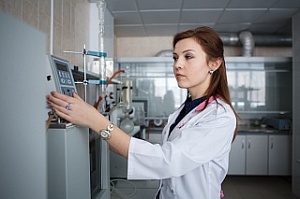Scientists of TSU’s Faculty of Chemistry are developing a new approach to the creating composite materials for use in traumatology and orthopedics. Researchers have suggested using a sol-gel method that would improve the structure of bioactive coatings. This, in turn, will reduce the percentage of implant rejection and accelerate patients’ rehabilitation. Their research is supported by a grant from the President of the Russian Federation.
The advantages of sol-gel synthesis are a high degree of homogeneity of particles, the possibility of coating materials of any shape and any sizes, and the purity of the final product.
- The sol-gel method has been known for a long time. For example, it is used to produce nanoparticles, - says Ekaterina Lyutova, the author of the project, a researcher at the Department of New Materials for the Electrical and Chemical Industry at the Faculty of Chemistry. - We suggest using this method to create biocompatible composite materials to replace the damaged or lost fragment of the patient's bone tissue.
The basis of the composite is titanium or its alloys. A calcium phosphate layer necessary for the patient's native tissues to take a foreign element is applied on a hard surface. However, this layer is often not enough to successfully place the implant.
The chemists propose to minimize risks by modifying the calcium-phosphate layer by sol-gel technology, which allows obtaining the finest films on any substrates from the colloidal solutions.
– The modified layer will regulate a number of important characteristics of the composite,- explains Ekaterina Lyutova. In particular, this will allow us to set the desired particle size on the surface of the coating and improve the wettability of the implant with biological fluids (blood, plasma), which increases the biocompatibility of the prosthesis with the patient's body. The use of the sol-gel method will ensure the closeness of the chemical and phase composition of the implant to the composition of the replaced tissue.
Along with this, chemists suggest changing the very composition of the bioactive layer - supplementing the traditionally used three-component system of silicon-phosphorus-calcium oxides with titanium oxide or magnesium oxide. This will positively affect the timing of the adhesion and the process of forming new bone tissue in the problem area.

